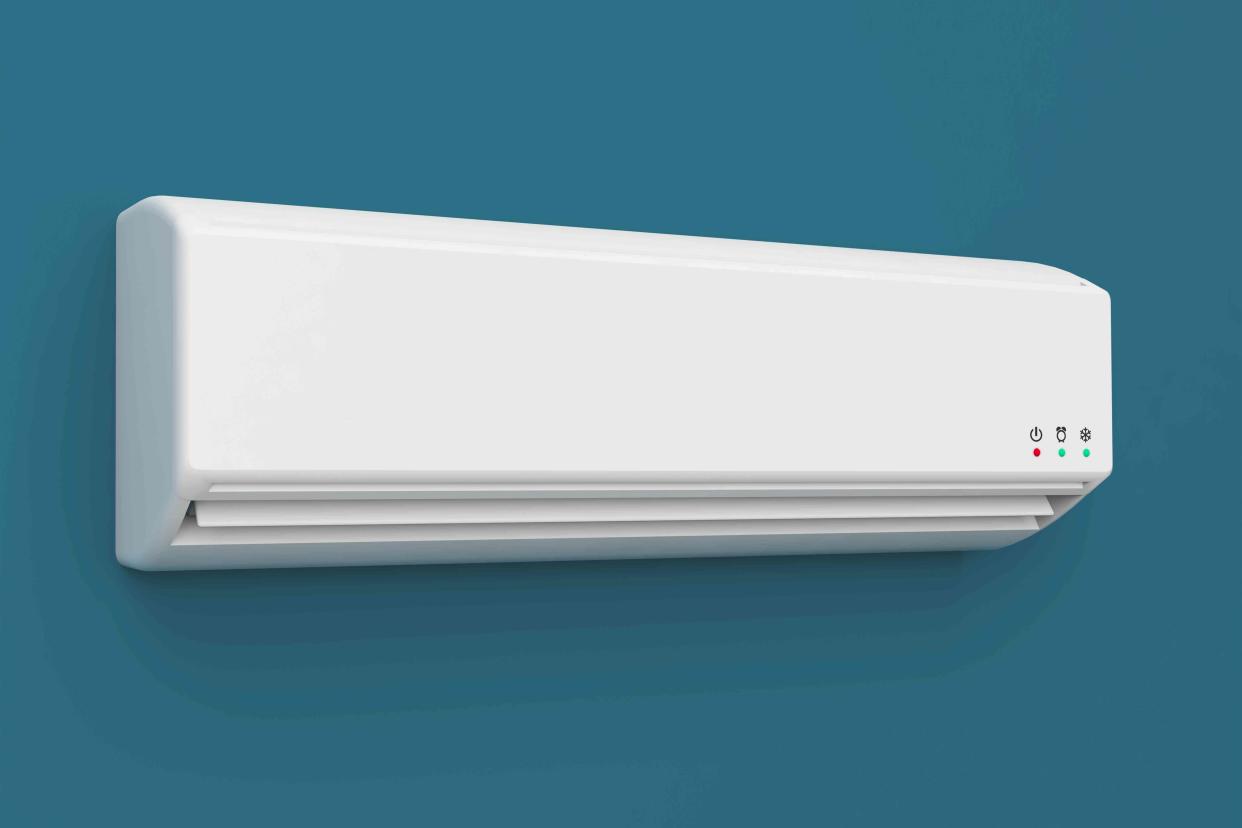What Are BTUs—and How Many Do You Need?
BTUs measure just how powerful your air conditioner is.

Getty Images
When you're in the middle of a heat wave, air conditioning can be absolutely essential. But deciding which model is best for the area you're cooling comes down to BTUs—and figuring out exactly what they mean. Get the scoop on what BTUs for air conditioners are, and how to choose the right size air conditioner for your family.
What Are BTUs?
BTUs stand for British Thermal Units, a measurement of the energy of heat gain (or in this case, heat loss!). A single BTU is the amount of energy needed to raise the temperature of a pound of water by one degree Fahrenheit. It's also the amount of energy produced by a single match, according to the U.S. Energy information Administration. To give you a better sense of how much energy we're talking about, a kilowatt hour of electricity is equivalent to 3,412 BTUs, while a gallon of gasoline produces 120,214 BTUs.
BTUs are measured by the thousands for air conditioners, with the smallest air conditioners producing 5,000 BTUs.
Related: The 9 Best Window Air Conditioners of 2023
How Many BTUs to Air-Condition Your Room
You'll need to know the measurements of the space you want to cool before you start shopping for air conditioners. as you'll need to calculate the square footage, then multiply that number 20 to get the number of BTUs you'll need, according to the Department of Energy.
So, for instance, for a 20 x 20 square foot room, which has 400 square feet, you'd need 8,000 BTUs to properly cool the room.
Related: How to Choose the Right Size AC for Your Space
But other factors can come into play to increase or decrease the amount of BTUs you'll need, according to Energy Star. If your room doesn't get much sunlight, you can subtract 10 percent, while if it gets a lot of sun, you'll need to add 10 percent to the total. (So in this case, you'd be looking at 8,800 BTUs for a sunny 20 x 20 space.) And if that 20 x 20 room is a kitchen, add another 4,000 BTUs to help account for the additional heat generated by cooking. You may also need to factor in additional BTUs if your space has very tall ceilings, or how well insulated it is. (A room that's well insulated may not need as many BTUs, for instance.) And if you have an open concept layout, you'll need to account for the whole square footage of the space when deciding how many BTUs your air conditioner needs.
Here are some general guidelines for BTUs for air conditioners to get you started:
100-250 square feet: 5,000 to 6,500 BTUs
250-350 square feet: 7,000 to 8,500 BTUs
350-550 square feet: 9,800 to 12,500 BTUs
Check out the energy-efficiency ratio, too
An air conditioner with an energy-efficiency ratio (EER) of 10 or above will reduce your overall operating costs, so you'll save money and energy every year that you use your air conditioner.
What Happens If You Use Too Many or Too Few BTUs for Air Conditioning?
Choosing the right BTUs for air conditioning the space is actually pretty important, if you want to ensure the room gets cooled properly. Here's what happens if you don't get the number of BTUs for air conditioners quite right.
If you choose an air conditioner with too few BTUs
If you choose too few BTUs, the air conditioner will have to work too hard, and cycle on and off far more often—which means major electric bills in your future.
If you choose an air conditioner with too many BTUs
If you think bigger is better when it comes to BTUs for your air conditioner, you're definitely wrong. While a 12,000 BTU air conditioner may cool your 120-square-foot bedroom pretty quickly, you won't be giving the air conditioner the opportunity to also address the humidity in the room. And that'll mean that you'll end up feeling cold and clammy in there. (Never a good feeling!)
For more Real Simple news, make sure to sign up for our newsletter!
Read the original article on Real Simple.
